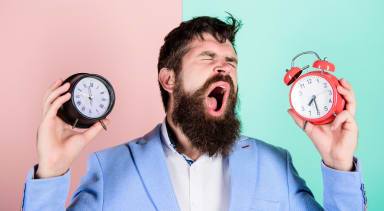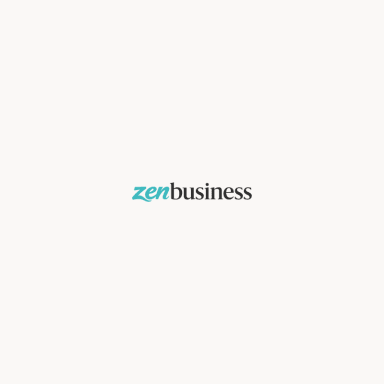Time management is a skill you can easily master. This simple, 5-step time management plan will improve your time management skills, help you identify and eliminate time-wasters, and get more things done each day.
Are you having trouble with time management? Are you busy all day but don’t get as much done as you’d like? Do you spend nights and weekends trying to catch up on work you should have gotten done during the normal workweek? Are you worried about losing your job or a contract because you keep missing project deadlines?
You’re not alone.
Time management is difficult for many people. That’s because you can’t really “manage” time. It is a unique resource. You can’t increase time, stop time, or store it for future use. Time doesn’t stop when the baby keeps you up half the night, rush hour traffic stalls, phone calls interrupt you, visitors drop by, your computer crashes, or you drop your smartphone down the toilet. No matter what’s going on in your life, your office, your industry or the world, time marches relentlessly on.
At some time in their lives, just about everyone has trouble keeping pace. For some people, time crunches are only an occasional problem. They may be due to a temporary work overload, untimely equipment failure, some short-lived personal situation, or a miscommunication about times and priorities.
Others have ongoing difficulties with getting things done on time. They tend to have a never-ending slew of unfinished projects vying for their attention, and spend much of their day putting out fires, pointing fingers, blaming others, or making up excuses for missed deadlines.
Fortunately, no matter which category you fall into, you can tame the time monster. All it takes is to understand three key time management principles and then follow our basic 5-step plan to regain control of your days.
3 Key Time Management Principles
There’s no one time management system, set of tools or strategies that will work for everyone. Time management is a personal matter. Each of us have different personalities, different expectations and different interpretations of success.
There are a handful of time management principles that do apply to everyone, however. Memorize and internalize these three principles you’ll be better able to control your time and reduce stress even if you never read a sentence further in this article:
1. You can’t “manage” time. The only thing you can manage is the way you, personally, use time.
2. The success (or failure) of any time management strategies you try will be determined by your personal motivation to succeed. The more you understand why using your time efficiently is important to you, your family and your future, the better you’ll become at doing it.
3. You will never be able to do everything that everyone you interact with wants you to do. Superwoman, Super Mom, Superman and Super Dad exist only in the movies and on TV. Real people who successfully manage their use of time do so by prioritizing their activities and giving the highest priority to activities that are most important to achieving their own business and personal goals.
If you really want to improve your time management skills, memorize those three principles. Write them out on sticky notes and put them on your computer monitor, on the back of your smartphone case, in your purse, on the fridge, or any place else you’ll see and read them when you feel stressed by lack of time.
5-Step Time Management Plan
Once you understand those principles of time management, getting your use of time under control boils down to these 5 basic steps:
- Write down your short term and long term goals
- Determine what your time is worth.
- Keep a time Log for one at least one week
- Analyze your time log to identify the time-wasting activities (ie, activities that don’t help your reach your long and short term goals)
- Set up a plan to eliminate the time wasters in your day.
Start Managing Your Time Now
Don’t wait another day to start solving your time management problem. The longer you wait, the further behind you’ll fall behind; the further you fall behind, the more stressful your situation will become.
Step 1: Write down your short-term and long-term goals.
Think of goals as the things you want to accomplish. You’ll have both short term goals and long term goals. You’ll also have personal and family goals, as well as business and professional goals.
The key to time management is to know your goals, prioritize them and to focus on tasks and activities that help you reach those goals.
Step 2: Determine what your time is worth.
Take a few minutes to calculate how much your time is worth,. Use your annual salary – or the salary you’d like to make – as a starting point. When you understand how much your time is worth, you can place a monetary value on the time you waste. Knowing how much even a short interruption costs you will help motivate you to start managing your time better so you can reach the goals you’ve set for yourself.
When you have calculated your time, write down the cost of your time for a five minute interruption, a 15 minute interruption and a half hour interruption on a sticky note or other piece of paper and put it on your computer monitor, telephone, desk or where ever you will see it frequently. Focusing on the value of your time will help you use it more wisely.
Calculate the cost of your time now by using our cost of time calculator.
Step 3: Keep A Time Log
You can’t fix something that’s broken until you determine exactly what’s broken. Doctors use blood test, x-Rays, CAT scans and other diagnostic studies to identify trouble spots and determine how to treat their patients. You need to do the same thing – only you’ll be your own “patient” and the diagnostic tool you’ll use to determine what needs to be fixed is a time log.
Create a time log similar to this one, and print out one copy for each day of the week.
Keep each day’s copy on your desk where you can easily and quickly reach it. Alternately, use time management software to keep a log.
To get an accurate picture of how you spend your time and what wastes your time, record the time you start each activity and the time at which you have to stop each activity due to interruptions, phone calls, meetings you attend, etc.
For instance, if you start writing a sales letter at 9:15 am, get interrupted at 9:30 by a phone call that lasts 5 minutes, then go back to writing the sales letter at 9:35, you’d have three entries, one at 9:15, one at 9:30 for the phone call, and one at 9:35 when you went back to working on the sales letter.
Write each interruption or change of activity down as it occurs so you don’t forget to list anything. At the end of the day, go back and rate each change in activity on a scale of 1 to 10 according to it’s importance, assigning a number 1 to the activities that are were least deserving of your time (for instance a sales call from someone you didn’t need to speak with) and 10 to the activities that were most important to do for the day.
Step 4: Analyze your time log.
Keep the time log for at least a week. At the end of the week, go back and analyze your log. See how many changes in activity were unnecessary or unimportant to what you needed to get done for the week and for your longer-term goals.
For instance, how many times did you get phone calls that could have been handled by someone else? How many times did you check your email or social media accounts while you were in the middle of doing something else? For help spotting unnecessary interruptions and activities, see the list of Common Time-Wasting Activities below.
Note how many times these things occurred. How much time did they take? How much did that time cost you? Those that occurred most often and were least important are the leading time-wasters in your day. (Keep in mind that if you are distracted – or distract yourself – it can take 5 or 10 minutes or more to regain your concentration on a difficult task.)
40 Common Time Wasting Activities
- Reading email too often during the day
- Participating in too many online communities
- Procrastinating jobs you don’t want to do
- Looking at your social media channels too frequently during the day
- Text messaging too often
- Watching Youtube videos on the spur of the moment
- Randomly surfing the web
- Accepting too many jobs at one time
- Multitasking
- Complaining or talking about other people
- Blaming people for making mistakes
- Not reading manuals and instructions when you start using new products or software
- Daydreaming
- Pondering too long over inconsequential decisions
- Searching through clutter for lost documents or other items
- Being excessively neat
- Doing work yourself that could be delegated to others
- Micromanaging the people who work for you
- Allowing subordinates and team members to dump problems on you that they ought to be solving on their own.
- Changing priorities unnecessarily
- Not taking steps to limit interruptions
- Writing letters, memos, reports that could be written by a secretary or assistant
- Failing to set goals and objectives
- Failing to make a daily plan
- Failing to set priorities
- Managing by crisis
- Planning or managing meetings poorly
- Not maintaining a good filling system
- Misplacing files and materials/not putting them where they belong
- Using outdated methods
- Failing to automate processes that could be automated to save time
- Getting involved in personal conflicts
- Personal insecurity
- Poor communications or poor listening habits
- Too many personal activities and personal phone calls during business hours
- Having too many people involved in decisions
- Not finishing one thing before starting another
- Taking or making unimportant telephone calls
- Spending too much time on phone calls
- Doing unimportant or unneeded tasks (busy work)
Step 5: Set Up A Plan to Eliminate Time-Wasters
To better manage your time, make a list of your biggest time wasting activities, and then plan to eliminate them, or drastically reduce the time you spend on them.
The best way to get something done about those time-wasting activities is to write down the cause of the problem and the steps to solve it using a format like the worksheet below.
As you get ready to tackle each problem, list what needs to be done, and who, other than you needs to be involved. If the biggest drain on your time seems too complex to fix at this point, start with smaller problems. When you successfully fix the small problems, move onto bigger problems.
Quick Time Management Fixes and Workarounds
Learning to manage your time efficiently all of the time is something that requires your awareness of issues – and practice.Old, time-wasting habits can be as difficult as any other habits to change. But if you’re in a bind now and need to get a project done or make more time in your day right away, try these time management quick fixes and workarounds.
- Make a list of your goals and post them where you’ll see them frequently
- Set aside a few minutes at the end of each day for planning and to list and schedule activities for the following day
- Assign priorities to each of those tasks, and assign enough time to the top priority items to be able to complete them.
- Schedule the highest priority tasks and/or the most difficult tasks for the time of day you will be most productive
- Break big tasks or projects down into manageable sections
- Schedule easier tasks or projects for your least productive times
- Set deadlines for completion of each task or portion of a task
- Eliminate distractions during your prime working hours
- Reduce the amount of time you spend on social media
- Complete one task before starting another
- Delegate work to others on your staff
- Be sure they have the training and authority to handle as much as possible on their own
- Outsource work to other departments, to other businesses or
- If you are a “morning” person, delay reading your email until afternoon, if possible. Use the morning to tackle important priorities. If you are expecting important email, scan your email for the message you are expecting and only open that piece of email.
- Turn off any automatic notifications telling you that there is new mail in your email inbox so you won’t be tempted to just “take a peek.”
- Turn off sound notification on your smartphone so you won’t be tempted to look at texts or social media notifications constantly
- Tell your administrative assistant to hold your calls. If you don’t have anyone to take your calls, let an answering machine or answering service take messages for you.
- Schedule a specific time of the day to take and return telephone calls. Doing so will help reduce the temptation to chat with callers about non-urgent matters






